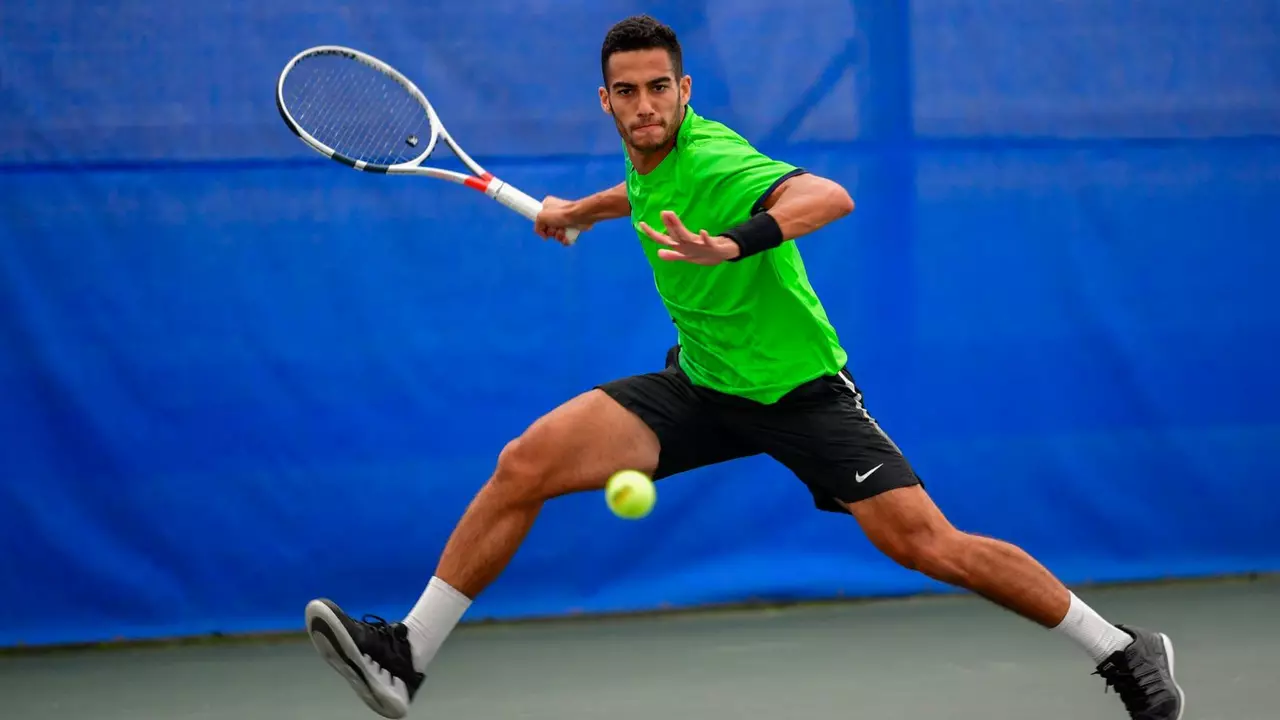Why do tennis players bend when they are receiving serves?

Grasping the Fundamentals of Serve Return
Not far from the heart and soul of tennis is a mystery that appears elementary to most, but remains a puzzler for many. Why do tennis players bend when they are receiving serves? Darius is here today to shed some light on this interesting topic, trust me, it's going to be a smash hit. Trek your way with me into this intricate world of sports maneuver and deftness.
Tennis, like many other sports, is replete with intricacies and subtleties that determine the course of a match. Each player's serve return stance, including that bend we are discussing, is not just a product of their whim or fancy, but a sophisticated response built on years of training, strategy and understanding of biomechanics. Intriguing, right?
Biomechanics: The Science Behind the Bend
Let's get to the nuts and bolts, shall we? Now, if you read "biomechanics", and thought I might be introducing an obscure fusion of biology and machinery, it's okay to laugh a bit. To a layman, it can indeed sound perplexing, but it is just the application of mechanical principles to living organisms, especially the human body. Simple enough, I hope?
In the context of tennis, biomechanics holds the key to understanding the extremely crucial 'bend'. When tennis players bend their knees in anticipation of the serve, it's not just for show. It's scientifically sound! The bend allows the players to dynamically respond to the fast incoming serve by providing a low, balanced stance. Think of it like a spring: the more it coils, the more potential energy it possesses for a powerful release.
Agility: A Spring in their Step
Agility plays a massive role in any sport, and tennis is no exception. Players need the ability to move rapidly and easily in any direction and from one movement pattern to another. The whole idea of bending before the serve is pretty much akin to a sprinter's starting position. It gives the player that much-needed initial burst of speed to reach the ball and make a successful return. If you've ever tried returning a serve while standing straight and failed miserably, feel free to join the club!
Moving on to the visual aspect, which is often underrated. The little bend can impair the server’s judgment about the exact position of the returning player. This may lead to a slight yet strategic advantage to the player receiving the serve. Crafty, isn't it?
Converting Reaction into Anticipation
This might seem like I am dragging you into a time-bound physics class now. But bear with me a bit. When you are at the receiving end of an incoming serve, it's not just about reaction, but also anticipation. This is where experience, knowledge of the opponent's patterns, and a smidgen of guesswork come together.
The process of bending helps players focus, increases their attentiveness, and prepares their mind and body for the quick reaction needed. You see, it's just not the physical maneuver; it's a mental game too. Ah, the beauty of sports!
Reflects Training and Skill
Now let's think for a moment - every move in a sport is systematic, learned through careful instruction and training, right? Such is the case with the 'bend'. Novice players might stay upright, but seasoned players are well aware of the tactical benefits of this stance. So, next time you see a tennis player bending, appreciate the hours of practice and the skill that goes into the making of that perfect stance.
Also, here is a pro tip for you budding tennis champs out there. If you are struggling with your serve return, try incorporating the bend into your playing style. But remember, practice is key. You’ll thank me later.
The Story of the Killer Bend
Alright, as promised, let me share a small chapter from my life - the day I learned the importance of the ‘bend’. Back in my schooldays, I was on the tennis team; energetic, but arguably not the most skilled. My coach, Mr. Thompson, was this stern figure who always insisted on practicing our stances. I always thought, "Why bother with stances when you can practice swings and serves?" How wrong I was!
One day, I faced the best server of our opponent school in a match. Being a bit ignorant about the technicalities, I stood upright to receive the serves, and boy, it was a disaster! I was literally swept off the court. Post the match, Mr. Thompson, not one to mince his words, gave me a piece of his mind. I then understood the importance of the ‘killer bend’, as he called it.
Since then, I worked tirelessly on my bend and serve return skills. Slowly but surely, my return game improved, courtesy of the infamous ‘killer bend’. This improved agility and reaction time helped me win several matches later in my school career.
So, there you have it! Something as seemingly trivial as bending while receiving a serve can play a vast role in the outcome of a game. It's a testament to the intricacy that sports demand and the levels of perfection that athletes aim for. The next time you watch a tennis match, you know what’s behind the bend. Don’t forget to marvel at the tech and tactics hidden in the beautiful game called tennis.